Tarot card interpretations are a fascinating and mysterious art, with numerous factors influencing the meaning behind each card. One such factor is the influence of planetary positions. The cosmic alignment of the planets at the time of a tarot reading can significantly impact the interpretation and guidance provided by the cards. This article delves into the intricate relationship between planetary positions and tarot interpretations, exploring the ways in which astrology and planetary symbolism can enhance and deepen the meaning of the cards. By understanding the connection between the celestial bodies and the tarot, we can unlock a wealth of insight and guidance for more accurate and detailed readings.
Contents
- Understanding Tarot Interpretations
- The Role of Planetary Positions
- How to Interpret Tarot Cards Based on Planetary Positions
- Examples of Tarot Card Interpretations with Planetary Influences
- Enhancing Tarot Readings Using Astrological Knowledge
- Tips for Accurate Tarot Readings with Planetary Considerations
- Planetary Positions and Tarot Spreads
- Using Planetary Retrogrades in Tarot Readings
- Planetary Positions and Timing in Tarot Readings
- Common Challenges and Misinterpretations with Planetary Tarot
- Conclusion
-
Frequently Asked Questions
- What is the significance of planetary positions in tarot readings?
- How does astrology influence tarot interpretations?
- What are the planetary symbols commonly found in tarot cards?
- How can I interpret tarot cards based on planetary positions?
- What are some examples of tarot card interpretations with planetary influences?
- How can I enhance tarot readings using astrological knowledge?
- What should I consider for accurate tarot readings with planetary considerations?
- How can I incorporate planetary positions into tarot spreads?
- What role do planetary retrogrades play in tarot readings?
- How can I use planetary positions to determine timing in tarot readings?
- References
Understanding Tarot Interpretations
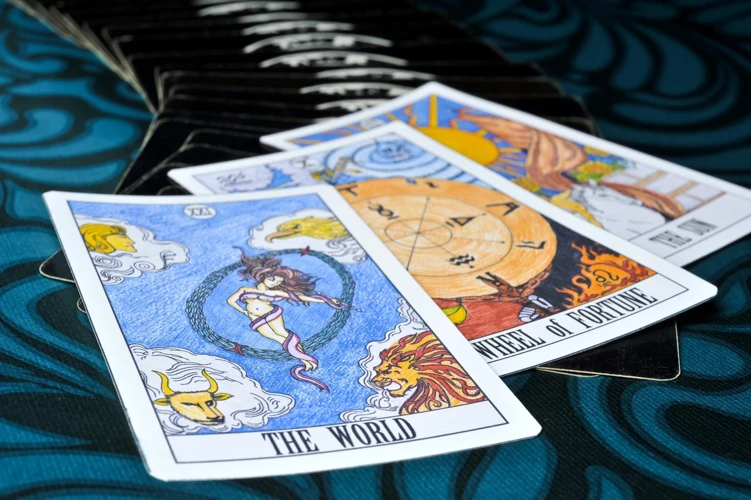
Understanding tarot interpretations is essential for anyone seeking to explore the depths of this ancient practice. Tarot cards are rich in symbolism and meaning, but their interpretations can vary depending on the reader’s knowledge and intuition. It is crucial to recognize that tarot cards are not purely literal representations but rather convey spiritual and metaphysical concepts. Each card holds multiple layers of meaning that encompass emotions, situations, relationships, and personal growth. To unlock the secrets of tarot, one must develop a deep understanding of the individual cards, their archetypal imagery, and the connection between them. It is also important to consider the context of the reading and the unique circumstances of the querent. Tarot interpretations can be further enhanced by incorporating astrology, which adds another layer of depth and insight. Astrology provides a framework for aligning the planetary positions at the time of the reading with the cards’ meanings. By understanding astrology’s influence on tarot, readers can decipher the hidden threads of destiny and gain profound insights into a person’s life path. Whether you are a seasoned tarot enthusiast or a newcomer, exploring the intricacies of tarot interpretations is a rewarding journey that unveils new layers of wisdom with each drawing of the cards. For those interested in further exploring the connection between astrology and tarot, integrating astrology into tarot practice can offer a deeper understanding of the cards’ meanings.
The Role of Planetary Positions
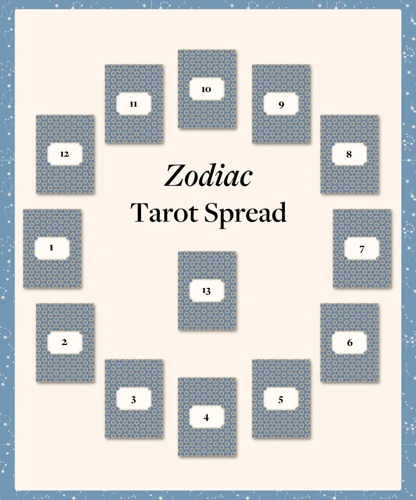
The role of planetary positions in tarot readings is profound and can greatly enhance the depth and accuracy of interpretations. Planetary positions refer to the alignment and influence of celestial bodies such as the planets and luminaries at the time of a tarot reading. Astrology plays a significant role in understanding this connection, as it recognizes the unique energies and symbolism associated with each planet. The positions of these celestial bodies can provide valuable insights into various aspects of a person’s life, including their personality traits, life events, and spiritual journey. By incorporating planetary positions into tarot readings, readers can tap into the cosmic forces at play and gain a deeper understanding of the querent’s situation. Astrological birth charts, which map out the positions of the planets at the time of an individual’s birth, can be particularly insightful when combined with tarot interpretations. This integration offers a holistic approach, bridging the realms of astrology and tarot to provide profound and personalized guidance. To delve further into the influence of planetary positions and how they can enhance tarot readings, exploring the role of zodiac signs in tarot readings can provide a deeper understanding of the cosmic connections at play.
Influence of Astrology on Tarot
The influence of astrology on tarot is profound and can greatly enhance the depth and accuracy of tarot interpretations. Astrology provides a cosmic framework that connects the positioning of celestial bodies with our personal experiences and energies. When combined with the mystical world of tarot, astrology illuminates the hidden influences and energies at play in a reading. One way astrology influences tarot is through the association of specific tarot cards with zodiac signs. Each zodiac sign carries its own unique qualities, characteristics, and energies, which can be mirrored in certain tarot cards. For example, the Emperor card often represents the zodiac sign Aries, known for its assertiveness, leadership, and ambition. The Empress card, on the other hand, aligns with the zodiac sign Taurus, symbolizing abundance, nurturing, and sensuality. By considering the zodiac sign associated with a particular card, readers can delve deeper into its meaning and provide more personalized insights for the querent. Additionally, astrology can guide tarot readers in understanding planetary transits that align with specific cards. For instance, during a Mercury retrograde period, the tarot card representing communication and technology, such as The Magician, may carry additional cautionary messages or highlight potential challenges. By acknowledging the influence of astrology on tarot readings, readers can tap into a wealth of cosmic wisdom and offer more nuanced interpretations. For those interested in exploring the interplay between zodiac signs and tarot further, understanding the role of zodiac signs in tarot readings can provide valuable insights into the individual cards’ astrological connections.
Planetary Symbols in Tarot Cards
Planetary symbols play a significant role in tarot cards, adding depth and nuance to their interpretations. Each planet in astrology is associated with specific qualities and energies, which are mirrored in the tarot deck through symbolism and imagery. Here are some planetary symbols commonly found in tarot cards:
1. The Sun: Represented by a bright, radiant sun, this celestial body symbolizes vitality, optimism, and abundance. In tarot, the Sun card signifies success, joy, and enlightenment. It represents a time of positivity, growth, and the discovery of one’s true self.
2. The Moon: Depicted as a crescent moon, the Moon card embodies intuition, dreams, and subconscious influences. It represents the ebb and flow of emotions and the mysteries that lie in the depths of our psyche. The Moon card often speaks to the inner realms of the querent’s mind, highlighting the need for reflection and introspection.
3. Mars: Mars is associated with energy, passion, and action. In tarot, the influence of Mars can be seen in cards such as The Tower, which represents sudden change and upheaval. Mars represents both destruction and creation, and its energy can manifest as a catalyst for transformation.
4. Venus: Venus symbolizes love, beauty, and harmony. The influence of Venus can be seen in cards such as The Empress, which represents abundance and nurturing energy. Venus encourages us to seek pleasure and engage in healthy relationships, reminding us of the importance of self-love and emotional fulfillment.
5. Mercury: Known as the planet of communication and intellect, Mercury is often associated with cards like The Magician, which represents resourcefulness and mastery of skills. Mercury’s influence encourages clear thinking, effective communication, and adaptability.
6. Jupiter: Representing expansion and good fortune, Jupiter’s influence can be seen in cards such as The Wheel of Fortune, which symbolizes changes in luck and destiny. Jupiter encourages growth, abundance, and optimism, reminding us to embrace new opportunities.
These planetary symbols in tarot cards provide additional layers of meaning and insight when interpreting readings. By understanding the influence of each planet, tarot readers can delve deeper into the intricate connections between astrology and tarot, offering more nuanced and accurate interpretations for the querent.
How to Interpret Tarot Cards Based on Planetary Positions
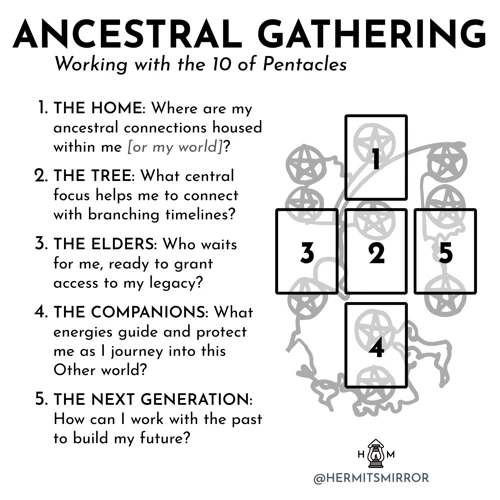
How to interpret tarot cards based on planetary positions is a skill that can elevate your readings to a new level of depth and accuracy. The first step in this process is to understand the basic principles of astrology and the influence of planetary energies. Each planet carries its unique energy and symbolism, which can be applied to tarot interpretations. Start by studying the planetary associations with the tarot cards. For example, the Sun card represents vitality, success, and optimism, aligning with the energy of the Sun in astrology. Consider the planetary positions at the time of the reading and determine which cards may be influenced by those planets. By understanding the planetary influences, you can gain insights into the themes and messages that are prevalent in the querent’s life. In addition to the cards themselves, pay attention to the astrological houses and zodiac signs associated with each card. This additional layer of information can provide further context and nuance to your interpretations. Trust your intuition and allow the planetary energies to guide your understanding of the cards. Practice and experience will help you develop your own unique system of interpreting tarot cards based on planetary positions. Remember, interpreting tarot cards based on planetary positions is a personal and intuitive process, so be open to exploring different techniques and discovering what resonates with you. With time and dedication, this holistic approach to tarot will allow you to unlock the hidden wisdom within the cards and provide more nuanced and accurate readings for yourself and others.
Examples of Tarot Card Interpretations with Planetary Influences
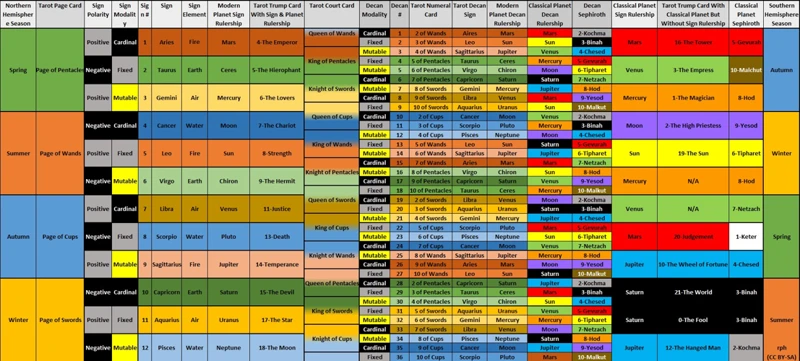
Tarot card interpretations with planetary influences can provide a deeper and more nuanced understanding of the cards. Let’s explore some examples of how planetary positions can shape the interpretation of specific tarot cards. The Sun card, associated with joy, vitality, and growth, takes on added significance when aligned with the Sun’s position in astrology, representing self-expression and confidence. The World card, symbolizing completion and mastery, gains a sense of cosmic harmony when influenced by the expansive energy of Jupiter. Moving to the Moon card, which signifies intuition and hidden emotions, its meaning is amplified when the Moon is in a prominent position in astrology, emphasizing dreamlike states and the exploration of the subconscious. Mars, the planet of action and assertiveness, can heighten the intensity of the Tower card, representing sudden change and upheaval. These examples highlight how planetary positions can offer a fresh perspective on tarot interpretations, allowing readers to unravel the intricacies of each card’s message and provide more insightful guidance to querents.
The Sun and The World Cards
The Sun and The World cards are two of the most powerful and significant cards in the tarot deck. Each card carries its unique symbolism and interpretation, making them integral components of any tarot reading. The Sun card represents joy, vitality, and success. It signifies a period of growth, abundance, and positive energy. When this card appears in a reading, it suggests that the querent is on the path to achieving their goals and experiencing a renewed sense of purpose. With its bright and radiant imagery, the Sun card radiates warmth, optimism, and confidence. Its presence in a reading indicates that the universe is aligning in the querent’s favor, and they are entering a phase of fulfillment and happiness. On the other hand, The World card represents completion, wholeness, and fulfillment. It signifies the end of a significant cycle and the beginning of a new chapter. The World card indicates that the querent has reached a state of self-awareness and inner harmony. It symbolizes a sense of accomplishment and mastery over challenges and suggests that the querent is ready to embrace new opportunities and embark on a journey of personal growth. With its motif of a figure surrounded by a laurel wreath, The World card symbolizes success, completion, and integration. When The Sun and The World cards appear together in a reading, their combined influence creates a dynamic and powerful energy. The Sun’s radiant positivity and The World’s sense of completion suggest that the querent has reached a significant milestone in their life journey, experiencing both external success and inner fulfillment. Together, these cards indicate that the querent is in a state of alignment and balance, ready to embrace their fullest potential and bask in the light of their achievements. Understanding the symbolism and interpretation of The Sun and The World cards allows tarot readers to provide insightful and meaningful guidance to those seeking clarity and direction in their lives.
The Moon and The High Priestess Cards
The Moon and The High Priestess cards are two powerful symbols in tarot readings that hold deep significance and wisdom. The Moon represents intuition, the subconscious mind, and the realm of dreams. It signifies the need to trust one’s inner voice and follow instincts. When The Moon card appears in a reading, it suggests a time of heightened emotions and uncertainty. It encourages introspection and reflection, urging the querent to explore their inner depths and confront any fears or illusions that may be holding them back. The High Priestess, on the other hand, represents intuition, hidden knowledge, and the mysteries of the universe. She embodies the feminine energy and spiritual wisdom, serving as a guide to uncovering the truth within oneself. The presence of The High Priestess card indicates a need for deep introspection, connecting with the subconscious mind, and tapping into one’s intuition for guidance. This card often signifies a time of spiritual awakening, where the querent is being called to trust their inner knowing and to tap into their inner wisdom. The Moon and The High Priestess cards together in a reading signify a potent combination of intuition and subconscious exploration. It suggests a profound journey into the depths of one’s unconscious mind, where hidden truths and profound insights reside. It signifies a time of spiritual growth and the need to connect with one’s higher self. When these cards appear, it is important to embrace the call for inner reflection, trust intuition, and honor the wisdom that lies within.
Mars and The Tower Card
In the realm of tarot, the relationship between celestial bodies and tarot cards is profound. One such example is the influence of Mars on The Tower card. Mars, the fiery planet associated with assertiveness, power, and destruction, brings its intense energy to The Tower card. The Tower card itself represents sudden change, upheaval, and the breakdown of old structures. When Mars aligns with The Tower, it intensifies these qualities, signaling a powerful and dramatic transformation that cannot be ignored. This combination often signifies the need for a major shift, the breaking down of existing barriers and limitations, and the clearing of the path for new beginnings. It is a call to embrace change and release what no longer serves us. The influence of Mars on The Tower card presents an opportunity for personal growth and liberation, but it can also be a challenging and disruptive time. It is crucial to approach this card with courage and resilience, as the journey through its energies can be tumultuous. By understanding the connection between Mars and The Tower card, tarot readers can offer insightful and empathetic guidance to those navigating periods of upheaval and transformation in their lives.
Enhancing Tarot Readings Using Astrological Knowledge
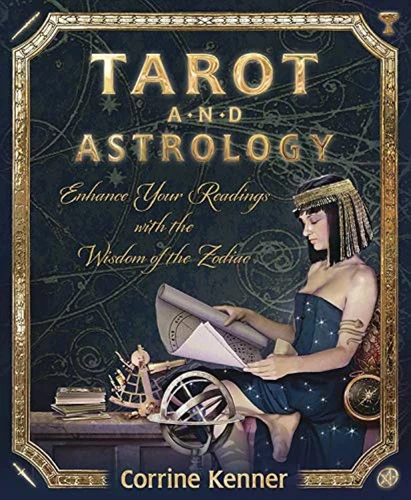
Enhancing tarot readings using astrological knowledge can elevate the accuracy and depth of interpretations. Astrology offers valuable insights into the planetary positions and their influence on an individual’s life. By integrating astrological knowledge into tarot readings, readers can provide more holistic and nuanced guidance. There are several ways to enhance tarot readings using astrology:
1. Planetary Associations: Each tarot card corresponds to specific planetary energies. For example, the Emperor card is associated with the planet Mars, representing assertiveness and leadership. By considering the planetary associations, readers can gain a deeper understanding of the card’s meaning and its relevance to the querent’s life.
2. Birth Chart Analysis: A birth chart is a snapshot of the planets’ positions at the time of an individual’s birth. By analyzing the birth chart alongside a tarot reading, readers can gain insights into the querent’s personality traits, strengths, challenges, and life purpose. This integration provides a comprehensive understanding of the querent’s life journey and aids in providing specific and relevant guidance.
3. Transits and Progressions: Transits and progressions refer to the ongoing movements of the planets in relation to the natal birth chart. By identifying significant transits and progressions, readers can offer guidance based on the energies and lessons that the querent is currently experiencing. This helps in providing timely and relevant advice and insights.
4. Timing of Events: Astrology can assist in predicting the timing of certain events or milestones in a person’s life. By considering the planetary positions and their interactions, readers can give more accurate timeframes for the manifestation of specific situations or opportunities.
Integrating astrological knowledge into tarot readings expands the scope and accuracy of interpretations. It allows readers to provide deeper insights, more personalized guidance, and a stronger connection with the querent’s life path. By combining the wisdom of tarot with the cosmic influences of astrology, readers can offer truly transformative and enlightening experiences for those seeking guidance and clarity.
Tips for Accurate Tarot Readings with Planetary Considerations
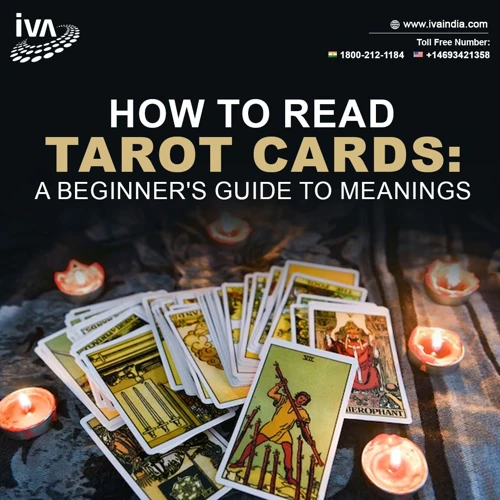
When conducting tarot readings with planetary considerations, there are several tips to enhance accuracy and depth in interpretations.
1. Familiarize yourself with astrological associations: Each planet has distinct qualities and influences, so it’s essential to understand their symbolism and how they relate to the tarot cards. For example, the Sun represents vitality and success, while Mars signifies action and assertiveness. Studying astrological associations will expand your tarot vocabulary and allow for more nuanced interpretations.
2. Pay attention to planetary placements: The specific position of each planet within the zodiac can affect its energy and influence. Take note of the planets’ signs and houses during a reading and consider how these placements relate to the cards being drawn. This information offers valuable insights into the querent’s strengths, challenges, and potential outcomes.
3. Use planetary tarot spreads: Incorporate spreads designed specifically to highlight the influence of planetary positions. These spreads often involve assigning each card to a specific planet or zodiac sign and analyzing the interactions and relationships among the cards. Planetary tarot spreads provide a structured framework for exploring the dynamics at play and offer a more focused reading.
4. Consider planetary aspects: Planetary aspects refer to the angles formed between different planets in the birth chart or at the time of the reading. These aspects can signify harmony, tension, or potential opportunities. Align the aspects with the cards to gain a deeper understanding of the dynamics and complexities within the querent’s life.
5. Trust your intuition: While it is crucial to consider the planetary positions and their associations, trust your intuition when interpreting the cards. Tarot readings are an intuitive practice that combines knowledge, symbolism, and intuition. Allow your intuition to guide you in discerning the overarching message and meaning of the cards, even if it may not align perfectly with planetary considerations.
By integrating planetary considerations into your tarot practice and following these tips, you can provide more accurate and insightful readings for yourself and others. Remember that practice and continued study are key to developing a deeper understanding of how planetary positions influence tarot interpretations.
Planetary Positions and Tarot Spreads
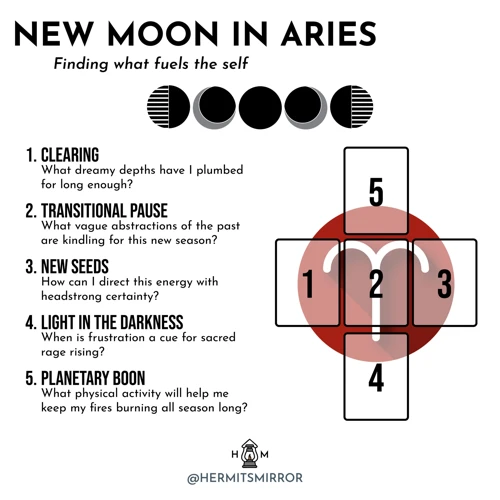
Planetary positions play a crucial role in determining the energy and dynamics of a tarot spread. When conducting a tarot reading, the position of the planets at the time of the reading can offer valuable insights into the current and future circumstances surrounding the querent. Each planet carries its unique energy and symbolism, which can influence the interpretation of the cards drawn. To incorporate planetary positions into tarot spreads, the reader can create a table or list that correlates each card position with a specific planet. For example:
– Card 1: The Self (Planet: Sun)
– Card 2: Relationships (Planet: Venus)
– Card 3: Career (Planet: Saturn)
– Card 4: Spirituality (Planet: Neptune)
– Card 5: Challenges (Planet: Mars)
By assigning a planet to each position, the reader can analyze the relationship between the card’s interpretation and the planetary influence. For instance, if the Sun card appears in the “Self” position, it signifies a period of self-discovery, confidence, and personal growth, fueled by the energy of the Sun, representing vitality and self-expression. On the other hand, if the Mars card appears in the “Challenges” position, it suggests that the querent may face obstacles, conflicts, or a need for assertiveness and strategic action.
Integrating planetary positions into tarot spreads expands the depth and accuracy of the reading, providing a comprehensive understanding of the querent’s current life circumstances and potential future outcomes. As the planets continuously move and shape the astrological landscape, their positions during a tarot reading provide valuable insights into the energies at play and help guide the interpretation and advice provided by the cards. By aligning the cards with the planets, tarot spreads become dynamic and personalized, offering specific and relevant guidance for the querent’s unique journey.
Using Planetary Retrogrades in Tarot Readings
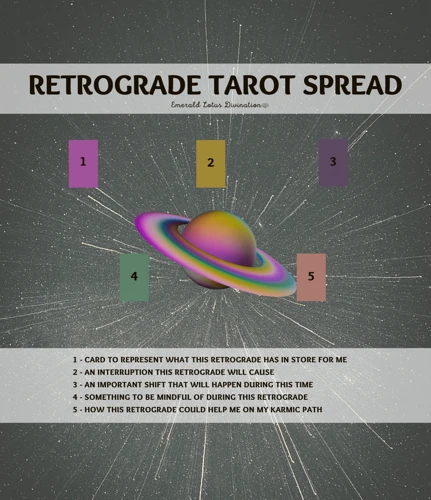
Using planetary retrogrades in tarot readings can add an extra layer of depth and insight to the interpretation of the cards. Retrogrades occur when a planet appears to be moving backward in its orbit from our perspective on Earth. This phenomenon is often associated with a time of reflection, review, and introspection. When a planet is in retrograde, its energy is said to be intensified and can have a profound impact on our lives and decision-making. In tarot readings, the influence of planetary retrogrades can be incorporated by considering the specific planet that is retrograde and how it relates to the cards drawn. For example, during a Mercury retrograde, communication and technology-related cards like the Magician or the Tower may take on added significance. Retrogrades can also highlight areas of our lives where we may need to revisit, reassess, or release certain patterns or beliefs. When interpreting tarot cards during retrogrades, it is crucial to pay attention to the symbolism and messages conveyed by the cards as they relate to the specific retrograde energy. It can be helpful to consult astrological resources to gain a deeper understanding of the retrograde’s influence and how it can intertwine with tarot interpretations. By incorporating the influence of planetary retrogrades into tarot readings, readers can provide more nuanced guidance and insight, helping querents navigate the unique challenges and opportunities presented during these astrological periods.
Planetary Positions and Timing in Tarot Readings
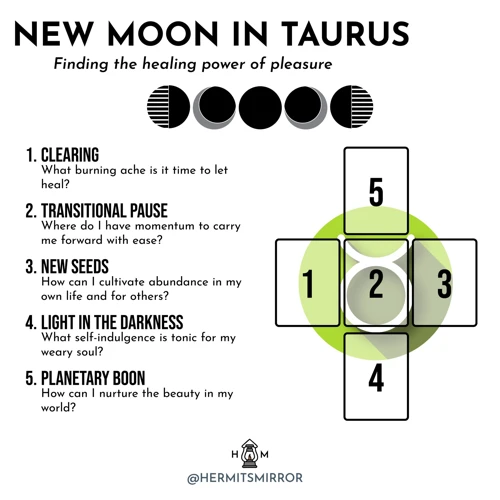
Planetary positions and timing play an integral role in tarot readings. The cosmic alignment of the planets at the time of a reading adds another layer of depth and meaning to the cards drawn. Each planet carries its unique energy that can greatly influence the interpretation of the tarot spread. For example, the position of the Sun can represent vitality, success, and a newfound sense of purpose, infusing the cards with a vibrant energy. The Moon, on the other hand, relates to intuition, emotions, and the unconscious mind, lending a more intuitive and introspective quality to the reading. Other planets, such as Mars, can bring about themes of action, conflict, and passion, shaping the overall narrative of the tarot spread. Additionally, the timing aspect of planetary positions is crucial in tarot readings. The movement of the planets through the zodiac signs reflects the changing energies and influences present in a person’s life. A tarot reader can use this information to provide insights into the present moment, as well as to predict future events or opportunities. By aligning the timing of the cards with the current planetary positions, tarot readings can offer a more accurate and nuanced understanding of the querent’s circumstances. Understanding the role of planetary positions and timing in tarot readings allows for a more in-depth exploration of the cards’ meanings and offers a broader perspective on the querent’s life journey. It adds a dynamic and ever-changing element to the interpretation process, allowing the reader to tap into the cosmic energies that shape our existence.
Common Challenges and Misinterpretations with Planetary Tarot
Common challenges and misinterpretations can arise when incorporating planetary positions into tarot readings. One of the main challenges is the potential for over-reliance on astrology. While astrology can provide valuable insights, it is important to remember that tarot is a standalone system with its own symbolism and meanings. It is crucial not to force an astrological interpretation onto a card if it does not naturally align with its traditional symbolism. Another challenge is the complexity of planetary influences. Interpreting tarot cards based on planetary positions requires a deep understanding of astrology and the specific influences of each planet. Misinterpretations can occur if the reader lacks this knowledge or misinterprets the planetary energy. Additionally, it is important to consider the querent’s personal astrological chart, as their unique placements may override or intensify the general planetary influences. Another common challenge is the tendency to focus solely on the major arcana cards. While major arcana cards often represent significant life events and lessons, it is essential to incorporate the influence of planetary positions into the interpretation of the minor arcana cards as well. Lastly, misinterpretation can occur when assigning a fixed meaning to a particular planetary influence. While certain planets may generally have specific associations, interpretations should be flexible and adaptable, taking into account the overall context of the reading and the querent’s individual circumstances. By being aware of these common challenges and misinterpretations, tarot readers can approach planetary tarot with caution and strive for a more accurate and nuanced interpretation.
Conclusion
In conclusion, the influence of planetary positions on tarot interpretations adds depth and nuance to the reading experience. By incorporating astrology and understanding the planetary symbols within the cards, tarot readers can provide more accurate and insightful interpretations. The celestial alignment at the time of the reading can offer valuable guidance on various aspects of life, including relationships, career decisions, and personal growth. It is important to remember that tarot interpretations are not set in stone and can vary based on individual intuition and context. Nonetheless, the inclusion of planetary positions adds an extra layer of meaning and specificity to the readings. It is recommended for tarot readers to continue expanding their knowledge of astrology and planetary symbolism to enhance their readings and provide more comprehensive guidance to querents. The connection between the celestial bodies and the tarot can truly unlock profound insights and offer a deeper understanding of life’s complexities. As one delves into the world of tarot interpretation, the influence of planetary positions serves as a guiding light, illuminating the path to self-discovery and wisdom.
Frequently Asked Questions
What is the significance of planetary positions in tarot readings?
The planetary positions in tarot readings hold great significance as they add an extra layer of depth and meaning to the interpretation. By aligning the positions of the planets with the cards drawn, readers can gain insights into various aspects of a person’s life and the energies at play.
How does astrology influence tarot interpretations?
Astrology influences tarot interpretations by providing a framework for understanding the connections between the celestial bodies and the cards. By considering the astrological associations of each planet, readers can uncover hidden themes, timing, and influences in a tarot reading.
What are the planetary symbols commonly found in tarot cards?
Tarot cards often feature planetary symbols such as the sun, moon, Mercury, Venus, Mars, and more. These symbols represent the energies and influences associated with the corresponding celestial bodies, adding layers of meaning to the cards and their interpretations.
How can I interpret tarot cards based on planetary positions?
To interpret tarot cards based on planetary positions, first, familiarize yourself with the meanings and associations of each planet. Then, consider the card drawn in relation to the planets and their current positions. Look for connections between the card’s symbolism and the energy of the planets to gain insights.
What are some examples of tarot card interpretations with planetary influences?
Examples of tarot card interpretations with planetary influences include the Sun card representing vitality and joy, influenced by the actual position of the sun in the sky. The High Priestess card may be associated with the intuitive and mysterious energies of the moon. The Tower card could be influenced by the fiery and transformative energy of Mars.
How can I enhance tarot readings using astrological knowledge?
To enhance tarot readings using astrological knowledge, incorporate the positions of the planets into your interpretations. Consider the zodiac signs associated with the planets, their influences, and the aspects they make with the querent’s natal chart. This integration can provide valuable insights and a deeper understanding of the reading.
What should I consider for accurate tarot readings with planetary considerations?
For accurate tarot readings with planetary considerations, it is crucial to have a solid understanding of both astrology and tarot. Take into account the current planetary positions, aspects, and the querent’s birth chart if available. Trust your intuition and practice regularly to develop your skills.
How can I incorporate planetary positions into tarot spreads?
To incorporate planetary positions into tarot spreads, you can assign specific cards or positions within the spread to represent each planet. Consider the energy and symbolism associated with the planet and its position to gain insight into how it influences the reading as a whole.
What role do planetary retrogrades play in tarot readings?
Planetary retrogrades can have a significant impact on tarot readings. Retrogrades often bring about introspection, delays, and reassessment. When interpreting tarot cards during retrogrades, consider the specific planet in retrograde and any challenges or lessons it may be highlighting in the reading.
How can I use planetary positions to determine timing in tarot readings?
To use planetary positions to determine timing in tarot readings, examine the positions and movements of the planets in relation to the querent’s birth chart. Look for transits, aspects, and planetary cycles that indicate significant events or periods. This can provide a timeframe for the guidance provided by the tarot cards.






